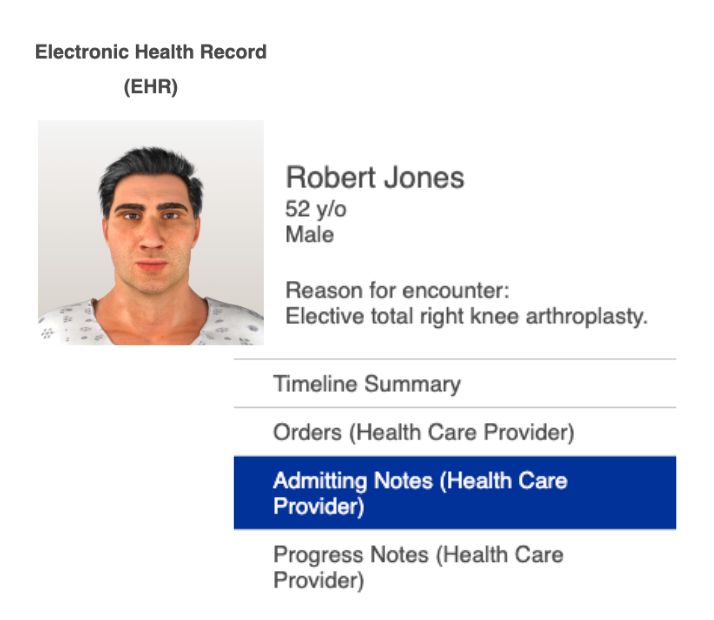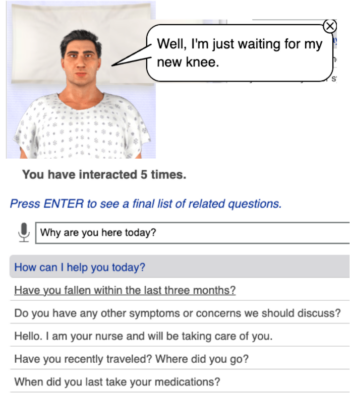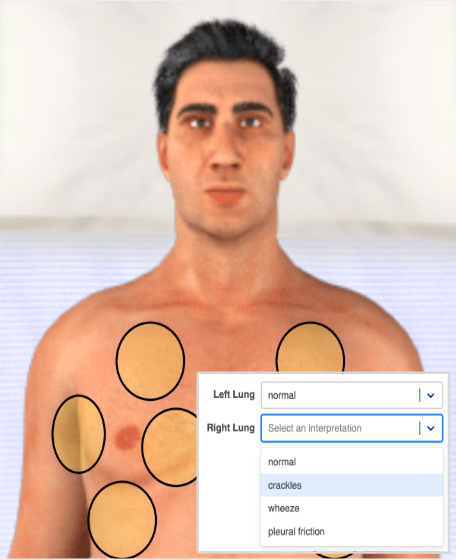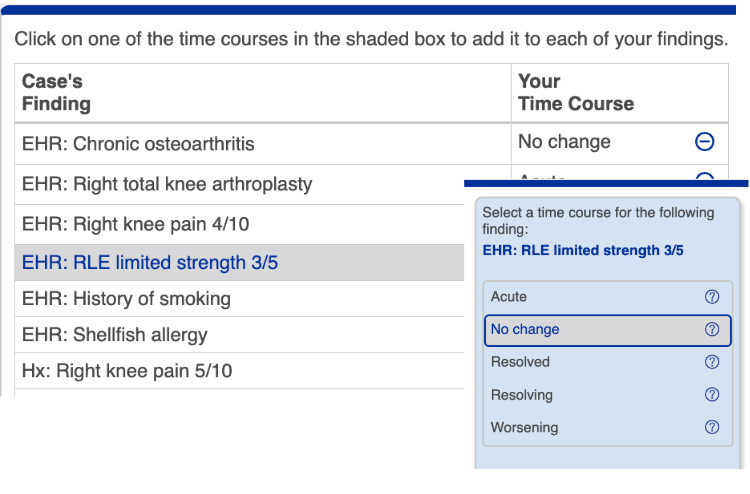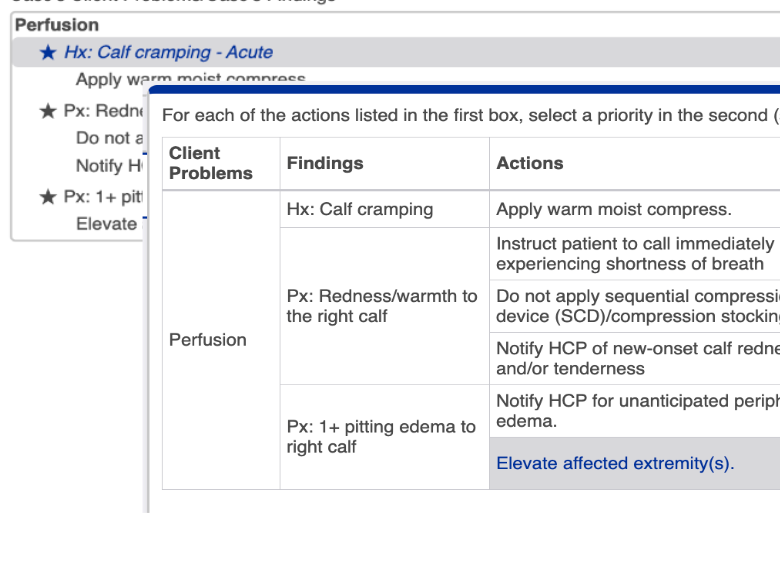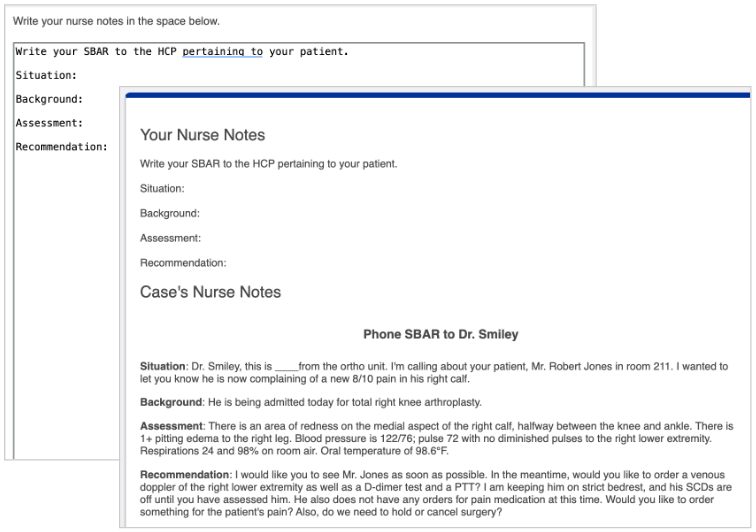Learn more about the uses & benefits of virtual simulation in undergraduate nursing education on the Kaplan Nursing Blog.
i-Human Patients virtually simulated patient encounters for undergraduate nursing students were thoughtfully developed with the RN/PN in mind. Students interact with a life-like patient that breathes, blinks, answers questions, and responds to intervention.
Virtual Patient Encounters
Students interact with virtual patients in a comprehensive patient encounter from history to nursing notes.
- Full Undergraduate Nursing Case catalog
- Diverse representation of age, gender, and ethnicity in avatars.
- Supporting avatars, including family members and caretakers
- Specialty/Course Bundles including Med-Surg, Pediatrics, Women’s Health and Mental Health
- All cases mapped to AACN Essentials to align with Competency-Based Curriculum
Cases Authored by Experienced Nurses
Standardized cases allow for objective, consistent grading across students and instructors
Auto-scoring provides immediate feedback and saves hours of grading time for faculty
24/7 availability on laptops and tablets wherever an internet connection is available
Improve Clinical Judgment
Virtual patient encounters assist students in gaining confidence in their clinical judgement skills throughout nursing school, as they prepare for the NCLEX® exam and beyond. Students gain confidence through interactions with virtual patients in a comprehensive encounter as they review the electronic health record, perform assessments, develop care plans, and document nursing notes in an immersive practice environment.
Standardized, fully-documented cases and integrated learning resources become the “textbook” for the course
Auto-scoring allows faculty to focus on group discussion and comprehension gaps while i-Human grades each assignment
Students master each step, building confidence in their own competency and clinical judgment skills.
Integrated Learning
Use i-Human Patients to help students understand where their classroom learnings apply to patient encounters.
- Lessons – Provide students with access to lessons from our library to review clinical procedures like how to take a history.
- Exercises – Allow students to dive deep into a topic (like how to perform a heart auscultation) within an appropriate case with an embedded exercise.
- Quizzes – Ensure that students have fully comprehended the topics and lessons with integrated quizzes.
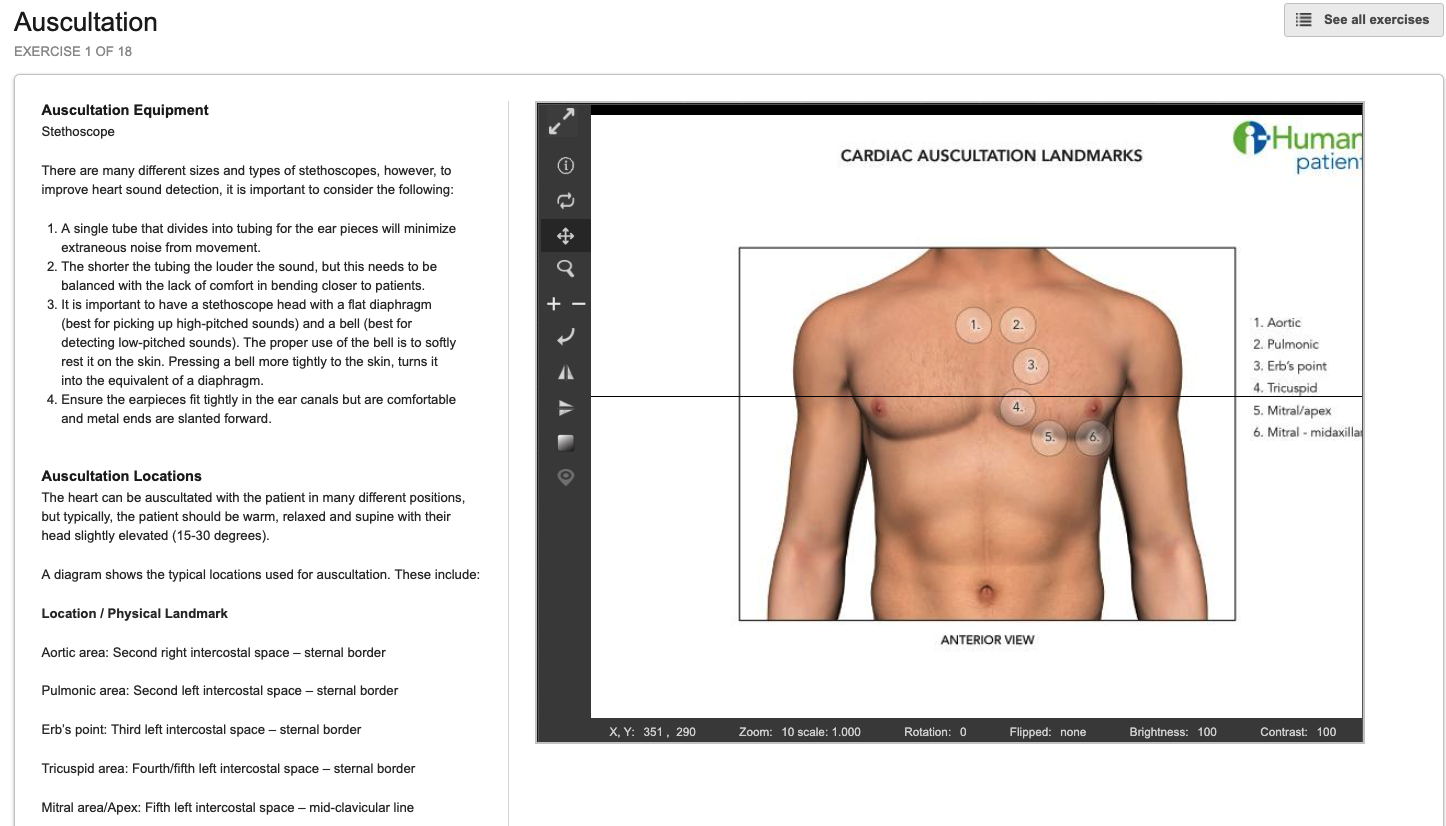

Rich Multimedia Library
Cases and lessons are supported with a rich media library including:
- High-res up to 40x magnification real medical images
- Instructional and procedure videos
- Real patient sounds such as lung and Proctor Harvey heart auscultations, different coughs, pulses, breathing, and more.
Robust Tracking and Reporting
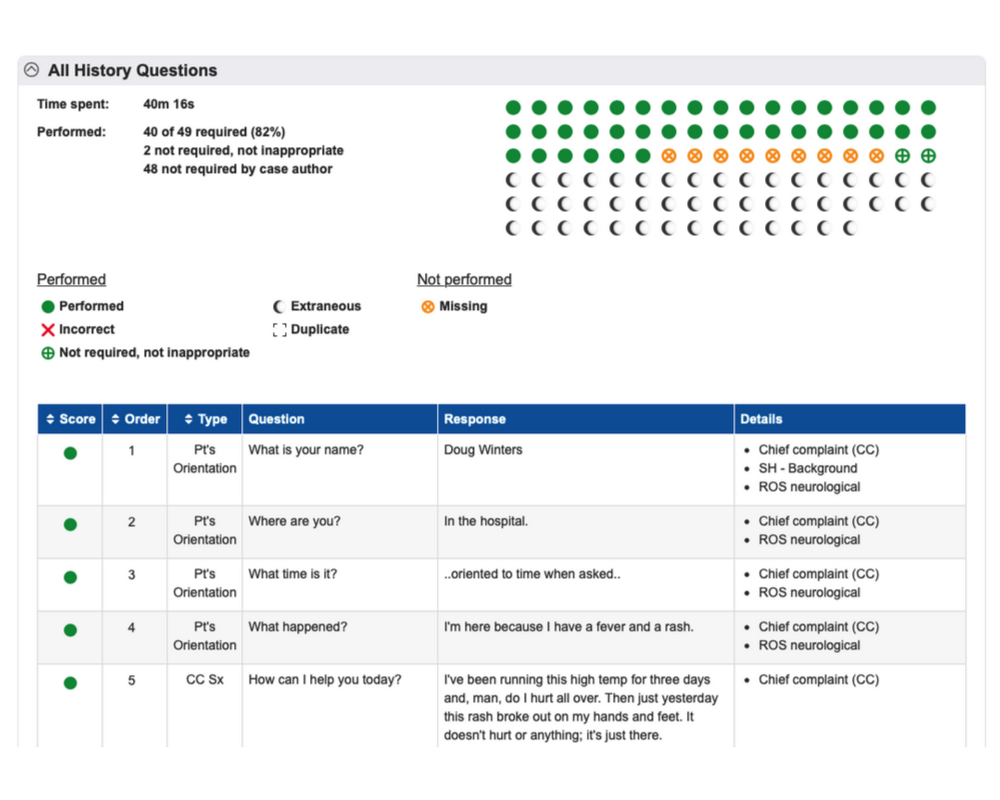
Auto-Scoring and Analytics
We track every keystroke to provide faculty and students with detailed performance stats.
Auto-scoring saves time for faculty. Students will automatically be graded and see what they did right or wrong, as well as what they missed.
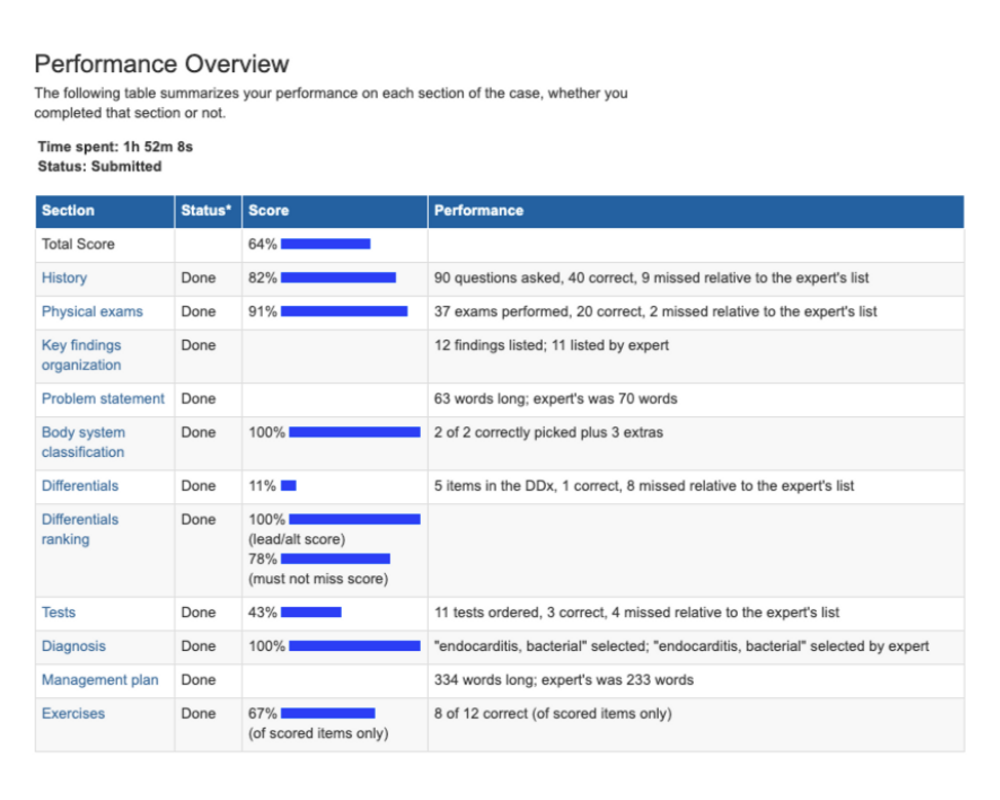
Individual Performance
Students and faculty can drill down to view detailed performance information.
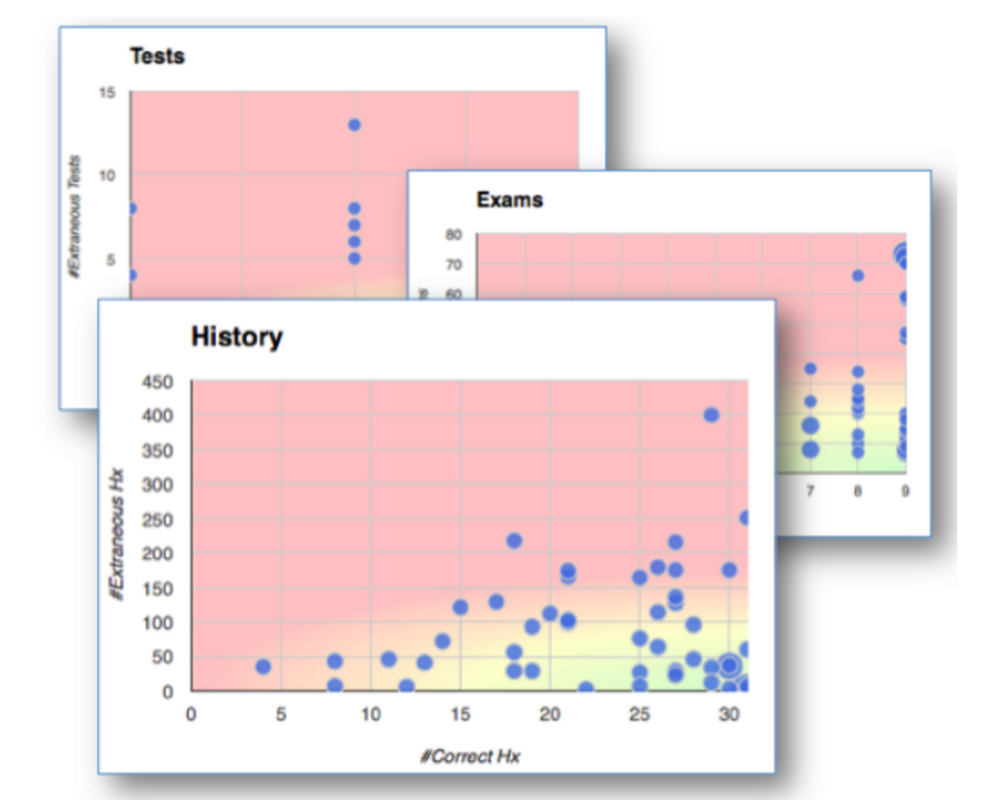
Group and Cohort Performance
Faculty can assess common areas of proficiency and deficiency across groups and cohorts.
Request a Demo
Learn How i-Human Patients can help you build diagnostic competency and clinical judgment skills in students. Enter your details below and our local program director will be in touch:

